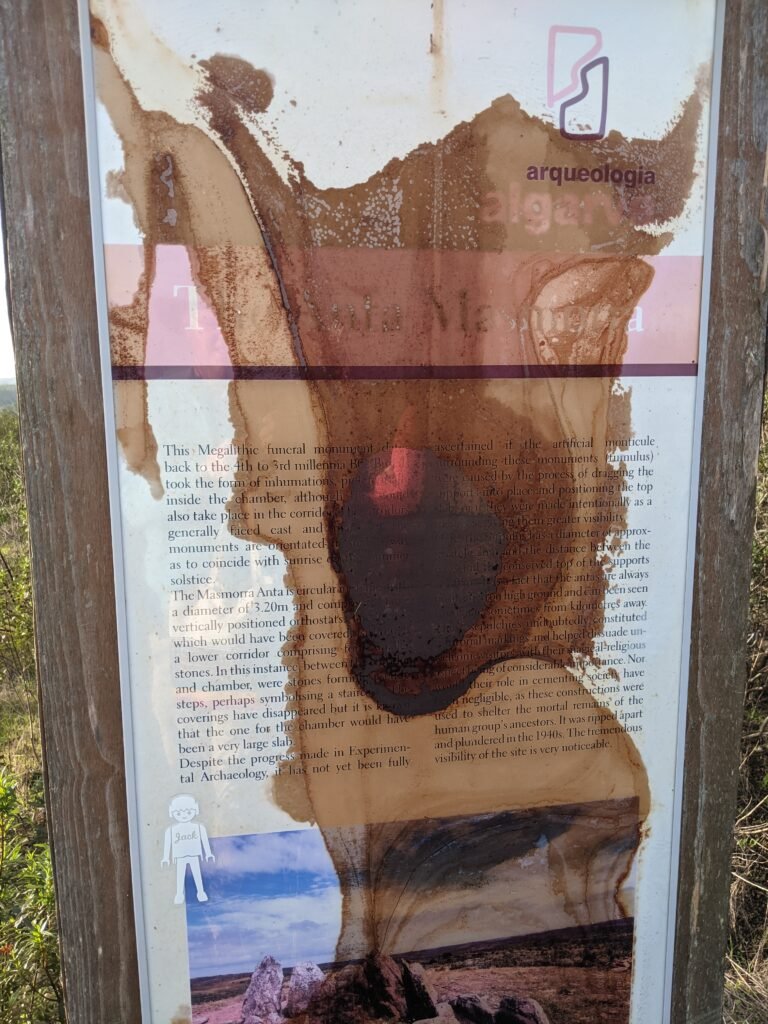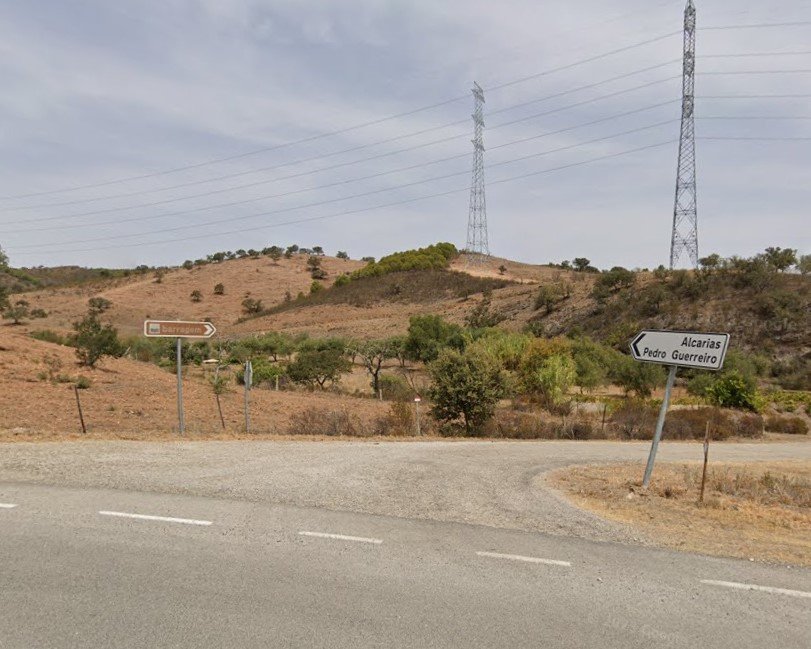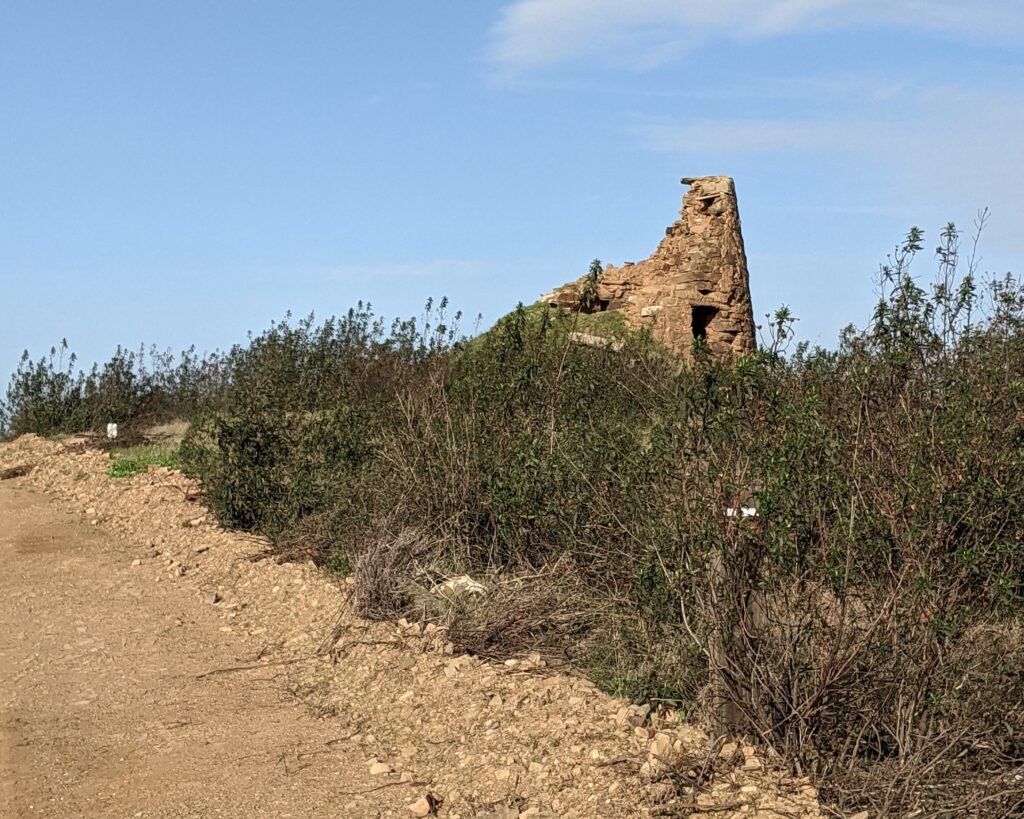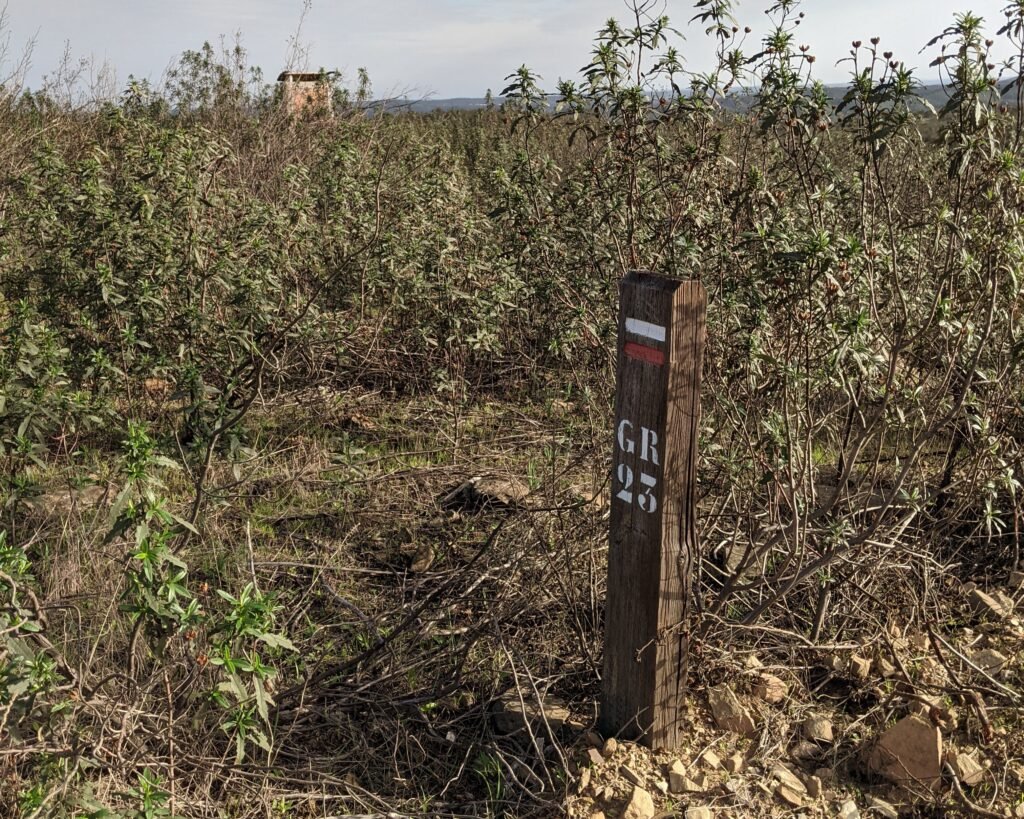Anta da Masmorra
High on a hill, surrounded by nothing but low scrub and forest, stands an abandoned and ruined site: a shattered windmill tower beside the road, forlorn. Just beyond lies the far more ancient Anta da Masmorra, showing less damage than the (relatively) modern windmill. This prehistoric tomb rests quietly in relative anonymity and isolation. It seems to mock the windmill, challenging it to last anywhere near as long.




This circular anta is about 3m across, and apart from the lost capstone is in reasonably good condition. It has a commanding view of the surrounding hills, and is in a quiet and peaceful location.
There used to exist an information board, but it has been left to ruin.


The English text reads:
The Anta Masmorra
This Megalithic funeral monument dats back to the 4th to 3rd millennia BC. Burials took the form of inhumations, primarially inside the chamber, although they could also take place in the corridor. The corridors generally faced east and many of the monuments are orientated in such a way as to coincide with sunrise on the summer solstice.
The Masmorra Anta is circular in shape with a diameter of 3.20m and comprises 9 large vertically positioned orthostats. The access which would have been covered is through a lower corridor comprising four smaller stones. In this instance, between the corridor and chamber, wer stones forming pseudo steps, perhaps symbolizing a starcase. The coverings have disappeared but it is known that the one for the chamber would have been a very large slab.
Despite the progress made in Experimental Archaeology, it has not yet been fully ascertained if the artificial monticule surrounding these monuments (tumulus) were caused by the process of dragging the supports into place and positioning the top slab or if they were made intentionally as a means of giving them greater visibility.
Here, the tumulus has a diameter of approximately 26m and the distance between the base and the conserved top of the supports is 1.05m. It is a fact that the antas are always positioned on high ground and can be seen from afar, sometimes from kilometres away. These sepulchres undoubtedly constituted territorial markings and helped dissuade unwelcome visitors with their magical-religious aspect being of considerable importance. Nor would their role in cementing society have been negligible, as these constructions were used to shelter the mortal remains of the human group’s ancestors. It was ripped apart and plundered in the 1940s. The tremendous visibility of the site is very noticeable.
Arqueologia Algarve
Location
It’s in the hills north of the town of Mealha, in the far north of the Algarve, nearly due north of Faro. It’s west of the N2 road that runs north from Faro to Almodôvar (in the Alentejo).
Access
You can drive along a reasonable dirt road to the anta, and park along the road. It’s a short walk among the bushes from the road.
Alternatively, there are hiking trails in the area that will take you past this anta. (Links below)
Signage
There’s a sign in the town of Mealha, but it doesn’t give much information. If you head west out of Mealha, about 1km along the main road, you’ll see a dirt road off to the left. There’s a sign for a dam (“Barragem”) and another pointing out the village of Alcarias Pedro Guerreiro. Follow that dirt road, and in the hamlet of Alcarias Pedro Guerreiro, you’ll see a tiny sign showing you you’re on the right path! When you see the ruined windmills on the right side of the road, stop. Look for the information sign (that is in ruins).





Links
- Entry (in English) from the Megalithic Portal
- Description of the trail (in English) from Visit Algarve
- Guided audio walk of the trail (in English) from Via Algarviana
- Article (in Portuguese) from Wikipedia
- Entry (in Portuguese) from from Archaeological Portal of Directorate-General of Cultural Heritage
Nearby
There are a few prehistoric sites in the area. The Anta de Curral da Castelhana and Tholos do Cerro de Malhanito are both in the nearby hills. The Anta das Pedras Altas is easily reached just south of the town of Mealha.

Pingback:Anta das Pedras Altas - Prehistoric Portugal
Pingback:Anta do Beringel - Prehistoric Portugal